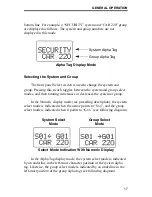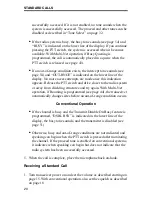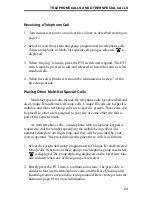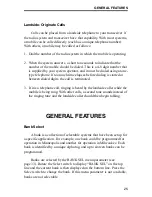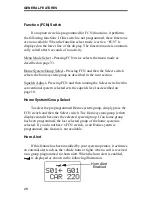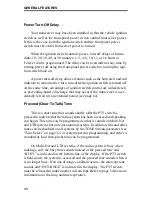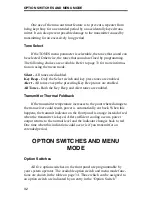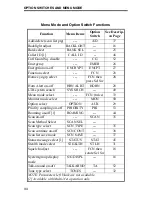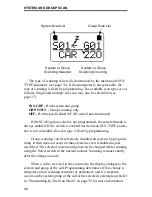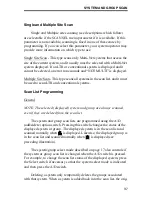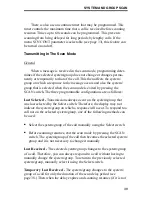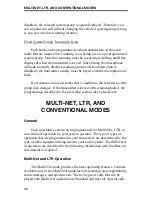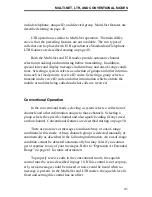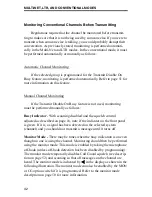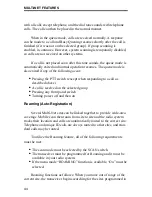
GENERAL FEATURES
30
Power Turn-Off Delay
Your transceiver may have been installed so that the vehicle ignition
switch as well as the front-panel power switch control transceiver power.
If this is the case, both the ignition switch and the front panel power
switch must be on for transceiver power to turn on.
When the ignition switch controls power, turn-off delays of Imme-
diate, 10, 20, 30, 40, or 50 minutes, 1, 2, 4, 8, 10, 12, or 16 hours or
Forever can be programmed. The delay can be overridden at any time by
turning power off using the front-panel power switch or turning the igni-
tion switch back on.
A power turn-off delay allows features such as the horn alert and call
indicator to remain active for a time after the ignition switch is turned off.
At the same time, advantages of ignition switch control are utilized such
as preventing battery discharge that may occur if the transceiver is acci-
dentally left on for an extended period (see page 62).
Proceed (Clear-To-Talk) Tone
This is a short tone that sounds shortly after the PTT switch is
pressed to indicate that the radio system has been accessed and speaking
can begin. This tone can be programmed so that it sounds on Multi-Net
and LTR systems but not conventional systems. In addition, this and other
tones can be disabled on all systems by the TONES menu parameter (see
“Tone Select” on page 32) or system operator programming, and either a
standard or loud (two-pitch) tone can be programmed.
On Multi-Net and LTR systems, if the radio system is busy when
making a call, the busy tone sounds instead of the proceed tone and
“BUSY” is indicated on the bottom line of the display. If the PTT switch
is held down, the system is accessed and the proceed tone sounds when it
is no longer busy. If an out-of-range condition occurs, the intercept tone
sounds and “OUT-RNGE” is indicated in the display. The PTT switch
must be released to make another call attempt. Refer to page 54 for more
information on the busy and intercept tones.


